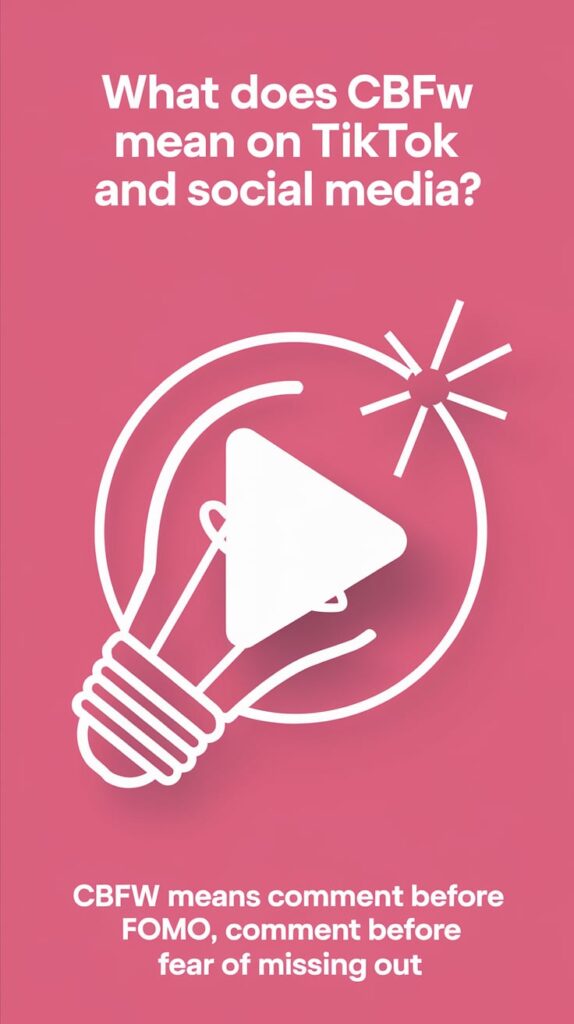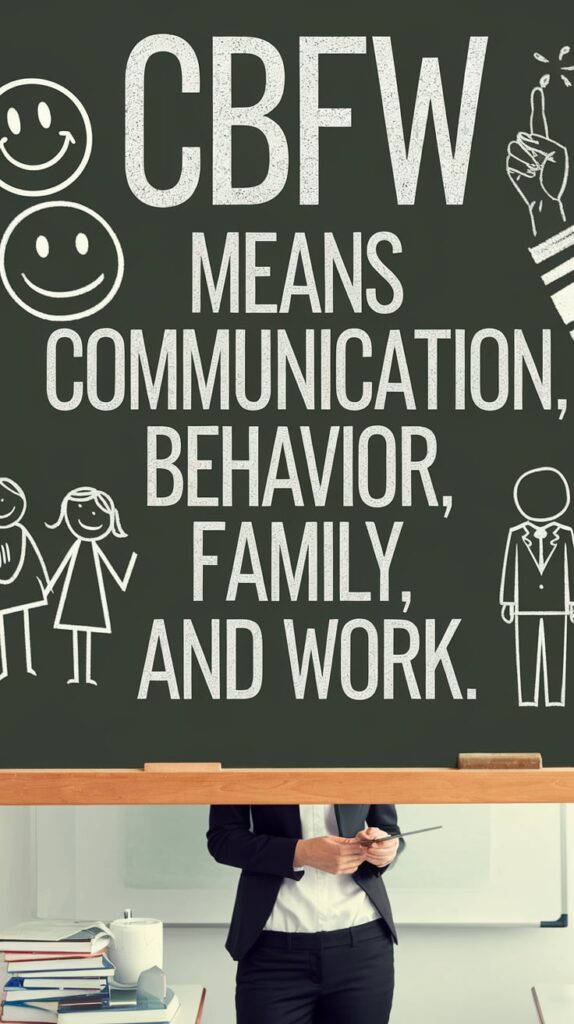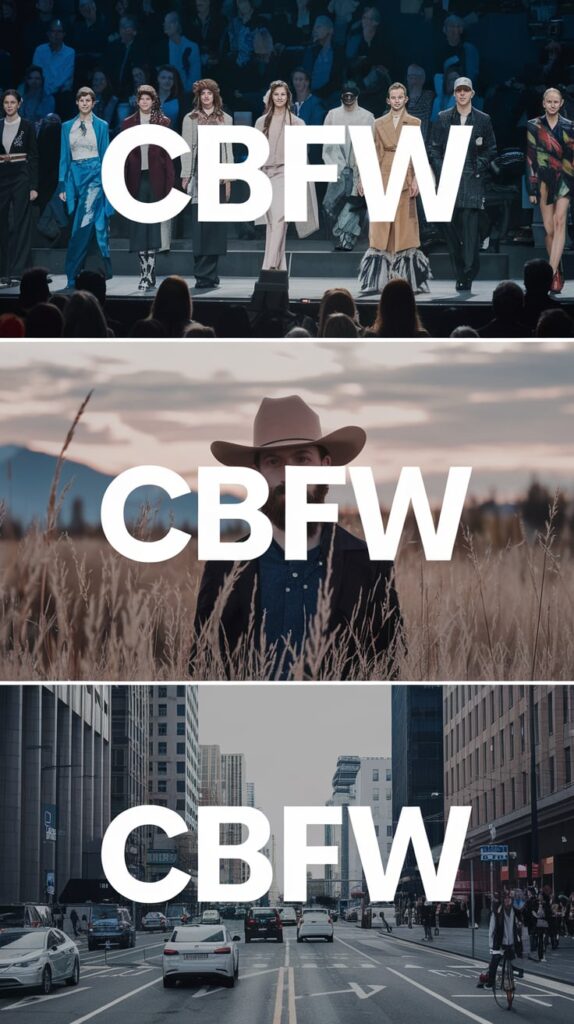In the fast-paced world of texting and social media, new slang emerges almost daily and one abbreviation that’s catching attention is CBFW. But what does it really mean? Short for “Can’t Be F–ked With,” CBFW is more than just a catchy phrase it’s a bold statement of confidence, self-worth, and emotional resilience.
Whether you’ve seen it in captions, memes, or chats, understanding CBFW gives you a glimpse into modern digital communication and cultural trends. Dive in to discover the full meaning, usage examples, and why this four-letter acronym is making waves online.
What Does CBFW Mean in Everyday Language?

At its core, CBFW conveys a strong message: the speaker refuses to be disrespected or trifled with. It’s a declaration of self-assurance, often employed in contexts where one needs to assert their boundaries.
This term is predominantly used in informal conversations, making it particularly prevalent among younger demographics.
The Emotional Weight of CBFW
When asking, “What does CBFW mean?” it’s essential to acknowledge the emotional context behind it. This abbreviation isn’t just about bravado; it often expresses deeper feelings, such as:
Frustration: The term can signal irritation when someone feels overwhelmed by others’ disrespect or trivialization. It encapsulates the frustration of dealing with people who do not take you seriously.
Empowerment: On a more positive note, CBFW also serves as a rallying cry for self-empowerment. It embodies a spirit of resilience and defiance against negativity, inspiring individuals to stand firm in their beliefs and boundaries.
The Context of Usage
Understanding the context in which CBFW is used is crucial. The term often arises in situations where someone feels their limits are being tested, whether in personal relationships, workplace dynamics, or social interactions.
It’s a way to reclaim power and assert one’s value in a situation where others may be attempting to diminish it.
What Does CBFW Mean in Text?
In texting, CBFW serves as a succinct way to communicate assertiveness and confidence without the need for lengthy explanations. It fits well into the fast-paced nature of digital conversations,
where brevity is often key. Texting encourages users to convey their messages quickly, and CBFW does just that—packaging a powerful sentiment into four letters.
Examples of CBFW in Texting Conversations
To clarify its usage, let’s look at some scenarios that demonstrate how CBFW might appear in text conversations:
Scenario 1:
- Friend A: “I can’t believe they thought you’d just give in!”
- Friend B: “Right? I’m CBFW. They need to respect my boundaries!”
Scenario 2:
- Person 1: “Are you going to let them get away with that?”
- Person 2: “No way! I’m CBFW about my worth.”
In these examples, the use of CBFW emphasizes a refusal to be taken lightly, enhancing the emotional weight of the conversation. The term allows individuals to succinctly communicate their stance without over-explaining or justifying themselves.
CBFW Meaning

While CBFW predominantly signifies “Can’t Be F–ked With,” it’s worth noting that acronyms can have different interpretations depending on the context. Some alternative meanings include:
Concert Bells of Fort Worth: This refers to a specific musical reference, but it’s far less common than the primary usage of CBFW.
Conceptually Based Fitness/Wellness: In fitness discussions, this term can represent a philosophy or approach to health and wellness that emphasizes holistic understanding and practice.
Understanding these variations helps clarify the context in which CBFW is used, although the informal meaning is far more prevalent in day-to-day communication.
The Broader Social Media Context
CBFW has found a significant presence across various social media platforms, shaping its usage and reception. These platforms include:
TikTok: Creators often use CBFW in videos to express themes of empowerment and confidence, particularly in response to negativity or doubt.
Videos might showcase individuals standing up for themselves, often accompanied by the phrase in captions or voiceovers.
Instagram: Users incorporate CBFW into captions alongside images that highlight strength or resilience. For instance, a post featuring a triumphant moment or a personal achievement might include “CBFW” to assert that the individual cannot be undermined.
Snapchat: In quick snapshots or stories, CBFW can add an emotional punch, encapsulating a moment of defiance or self-assurance. Users might post a story about overcoming obstacles and conclude with the phrase to drive their point home.
read more : Which of the Following: Definition + Complete Usage + Grammar – Grammar Beacon
CBFW and Cultural Trends
The rise of CBFW reflects a broader cultural trend emphasizing self-confidence and empowerment. Influencers and public figures often adopt slang like CBFW to resonate with their audiences, fostering a sense of connection and relatability.
This phenomenon aligns with a growing movement that encourages people to embrace their authenticity, assert their rights, and cultivate self-love. This following phrase fits snugly into this narrative, offering a linguistic tool for those who wish to express their boundaries assertively.
Emotional Tone and Usage of CBFW
When considering “What does CBFW mean?” it’s crucial to explore the emotional tone that accompanies its usage. CBFW can evoke various feelings, including:
Confidence: The primary emotional takeaway, as the term promotes a strong sense of self. When someone declares they are CBFW, they are essentially affirming their worth and unwillingness to accept anything less.
Frustration: Often tied to contexts where individuals feel unappreciated or disrespected. The use of CBFW can be a reaction to previous disrespect, signaling that enough is enough.
Using that phrase can thus serve multiple purposes in conversation, from expressing irritation to asserting one’s confidence. The emotional nuance embedded in the term makes it a powerful addition to informal dialogue.
Best Practices for Using CBFW

When integrating CBFW into your communications, consider these best practices to ensure effective and respectful usage:
Know Your Audience: Gauge whether the context and your audience are appropriate for slang. CBFW may not suit formal or professional environments. In a workplace setting, for instance, the term might come off as too aggressive or unprofessional.
Use Sparingly: Overusing slang can dilute its impact. Employ CBFW selectively when you want to emphasize your stance, as constant repetition can make it lose its punch.
Be Mindful of Context: Given its emotional undertones, be careful to avoid offending anyone, especially in mixed company. Not everyone will appreciate the bluntness of CBFW, so understanding your audience’s sensibilities is key.
Potential Misinterpretations
Slang terms can often lead to misunderstandings. Some potential pitfalls to watch out for include:
Offensiveness: Depending on the audience, CBFW can be seen as disrespectful or aggressive. It’s essential to consider the feelings of others and how they might perceive your language.
Cultural Sensitivity: Not everyone will be familiar with or appreciate slang. Adjust your language based on the people you’re communicating with, especially in diverse or cross-cultural settings.
The Evolution of Slang: in a Historical Context
Slang has always played a vital role in shaping language, particularly among younger generations. It fosters a sense of community and belonging, allowing individuals to connect through shared language.
The dynamic nature of slang reflects cultural shifts, social attitudes, and generational perspectives.
How CBFW Fits into the Slang Landscape
CBFW fits into the contemporary slang landscape as a term that encapsulates modern attitudes toward self-assertion and resilience. Its succinct nature aligns well with the fast-paced dynamics of texting and social media, making it a favorite among younger users.
The proliferation of digital communication has allowed slang to spread rapidly, with terms like CBFW gaining traction almost overnight. As new phrases emerge, they often reflect the zeitgeist of the time, allowing users to express complex emotions in simple terms.
The Lifespan of Slang Terms
Some slang terms fade quickly, while others endure and evolve. CBFW appears to be one of the latter, resonating with individuals seeking to assert their identity in a world where social pressures are prevalent. As long as themes of empowerment and self-assertion remain relevant, terms like CBFW will likely continue to thrive.
CBFW and Mental Health
Using terms like CBFW can have positive implications for mental health. By asserting one’s worth and refusing to be disrespected, individuals may foster a stronger sense of self-esteem and resilience.
The ability to articulate one’s boundaries is crucial in navigating interpersonal relationships, and the phrase serves as an empowering reminder of one’s rights.
In therapeutic settings, the language individuals choose to express themselves can significantly affect their emotional well-being. Assertive language helps individuals reclaim their narrative, reducing feelings of helplessness and frustration.
read more : Munyun Meaning Explained – Grammar Beacon
The Impact of Assertive Language on Relationships
In interpersonal relationships, assertive language can help set boundaries and communicate feelings effectively. CBFW can play a role in encouraging open dialogue about self-worth and respect.
It signals to others that you value yourself and expect the same in return, which is essential for healthy relationships.When individuals express themselves assertively, they are more likely to cultivate relationships built on mutual respect.
The use of the phrase can facilitate conversations about boundaries and expectations, fostering clearer communication and understanding.
The Influence of CBFW in Music and Media

CBFW has permeated various aspects of popular culture, particularly in music and media. Artists often embrace assertive language in their lyrics, reflecting the empowerment ethos that phrase embodies.
This influence is especially evident in genres such as hip-hop and rap, where expressions of strength and defiance are commonplace.
Hip-Hop and Rap: Many hip-hop artists use assertive phrases similar to CBFW in their lyrics, often emphasizing themes of confidence and resilience. The genre thrives on storytelling, and terms like CBFW serve as powerful tools to convey narratives of overcoming adversity.
Television and Film: Characters in movies and TV shows who exemplify a “don’t mess with me” attitude often reflect the sentiment of CBFW, reinforcing its cultural relevance.
These portrayals contribute to the normalization of assertive language and encourage viewers to adopt similar attitudes in their own lives.
Influencer Culture
Social media influencers frequently utilize CBFW to resonate with their followers. By adopting this slang, they connect with their audience on a personal level, fostering a sense of community around shared experiences of empowerment and resilience.
Influencers often create content that encourages viewers to embrace their individuality and stand firm against adversity. By incorporating the phrase into their messaging, they validate the feelings of their followers and promote a culture of confidence and self-acceptance.
The Future of CBFW in Language
As language continues to evolve, the future of terms like CBFW may take on new dimensions. With changing social dynamics and communication methods, we might see:
Broader Acceptance: As more people become familiar with slang, its usage may extend beyond informal settings, entering more diverse contexts. As cultural attitudes shift, phrases like CBFW could become part of mainstream language.
Emergence of New Acronyms: As digital communication progresses, new phrases and acronyms will likely arise, reflecting contemporary cultural shifts.
The rapid pace of social media ensures that language will continue to adapt, with new terms surfacing to meet the needs of evolving communication.
The Role of Technology in Language Development
The rapid growth of technology plays a crucial role in shaping language. As communication platforms evolve, they will continue to influence how we create and adopt slang.
The immediacy of texting and social media encourages the development of concise, impactful phrases like CBFW, allowing them to gain traction quickly.
Moreover, technological advancements such as emojis and GIFs provide additional layers of expression.This interplay between text and visual media adds richness to our communication, enabling us to convey complex emotions in engaging ways.
Key Takeaways
- CBFW stands for “Can’t Be F–ked With,” embodying assertiveness and self-confidence.
- The term carries emotional weight, often signaling frustration or empowerment in conversations.
- Use CBFW thoughtfully in appropriate contexts to maintain respect and clarity in communication.
- CBFW reflects broader cultural trends toward self-confidence and resilience, especially among younger generations.
- The influence of CBFW extends into popular culture, music, and influencer content, highlighting its relevance and impact.
Conclusion

Understanding what CBFW means and how it fits into the fabric of contemporary language allows us to communicate more effectively in both personal and digital spaces.
It’s a powerful term that encapsulates self-assertion, emotional nuance, and cultural relevance. As slang evolves, so will our understanding and usage of terms enabling richer and more meaningful interactions.
Summary Table
| Aspect | Details |
| Meaning | Can’t Be F–ked With |
| Emotional Context | Frustration, empowerment, assertiveness |
| Usage | Predominantly informal, popular in texting and social media |
| Cultural Influence | Music (hip-hop), film, influencer content |
| Best Practices | Know your audience, use sparingly, be mindful of context |
| Future Predictions | Broader acceptance, emergence of new slang |
With this comprehensive understanding, you’ll not only grasp what the following phrase means but also appreciate its significance in today’s communication landscape.
Whether you choose to incorporate it into your own language or simply understand its implications, the phrase remains a dynamic expression of confidence and resilience in the face of adversity.
FAQs
What does CBFW mean?
CBFW stands for “Can’t Be F–ked With,” a phrase used to express confidence, assertiveness, and self worth.
How is CBFW used in texting?
It’s commonly used to show you won’t tolerate disrespect or trivialization. For example: “I’m CBFW about my time don’t waste it!”
Is CBFW appropriate for professional settings?
No, it’s highly informal and often considered vulgar. Use it only in casual conversations with friends or on social media.
Are there other meanings of CBFW?
Yes, though less common: Concert Bells of Fort Worth or Conceptually Based Fitness/Wellness, depending on context.
Why is CBFW popular on social media?
It’s concise, bold, and conveys empowerment perfect for TikTok, Instagram, and Snapchat captions emphasizing confidence and resilience.

Steve Rogars is an experienced blogger and language enthusiast at Grammar Beacon. With a passion for clear communication and a keen eye for detail, he shares insights on grammar, writing tips, and language trends. Steve’s engaging style makes learning enjoyable, helping readers enhance their writing skills. When he’s not crafting posts, he enjoys reading, exploring new cultures, and inspiring others to appreciate the beauty of language.







